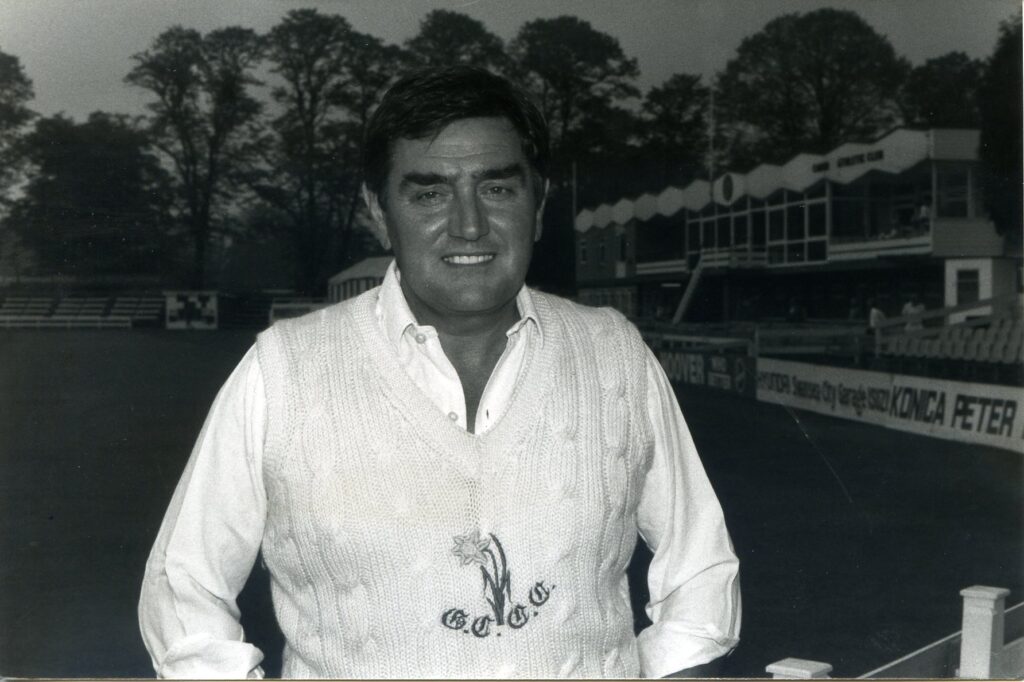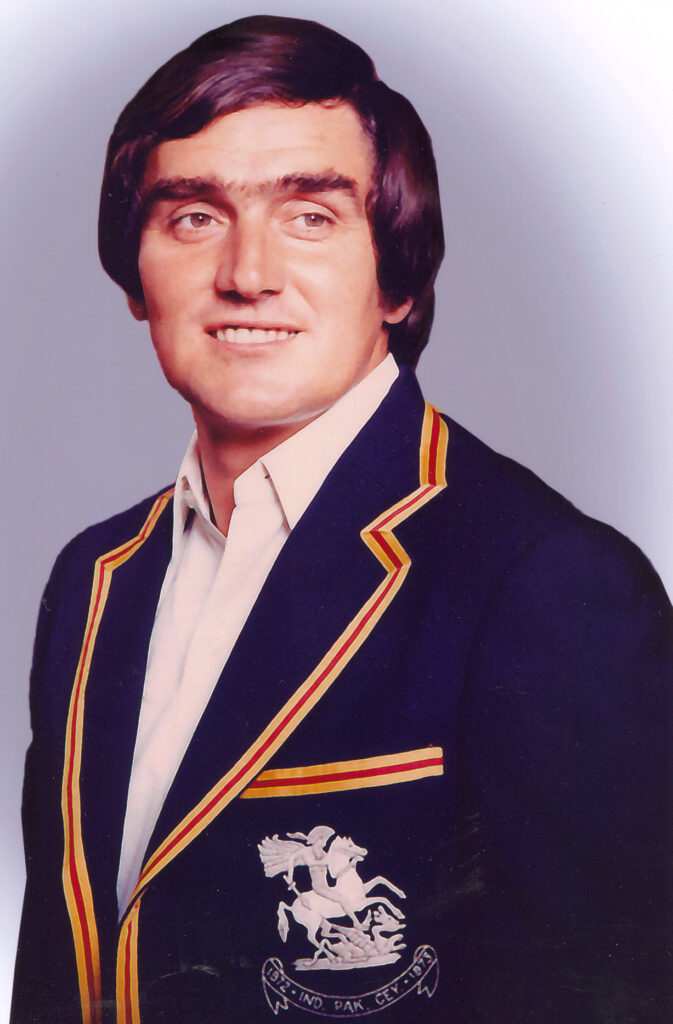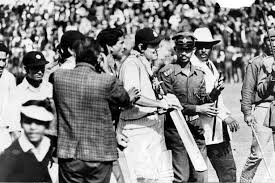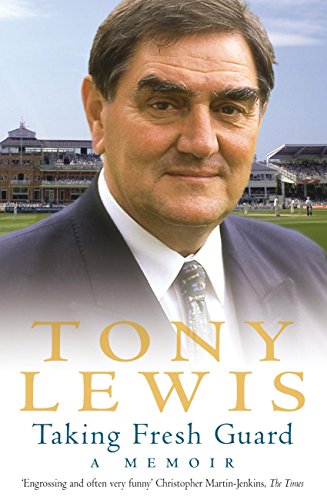Tony Lewis

TONY LEWIS CBE is a Welsh former cricketer, who captained England, became a journalist, went on to become the face of BBC television cricket coverage in the 1990s and president of the Marylebone Cricket Club (MCC).
Lewis was born July 6, 1938, in Swansea, the first of two children of Wilfrid Lewis and his wife Marjorie. The family moved to Neath after the Second World War.
Lewis attended the Gnoll School in Neath and Neath Grammar School for Boys, where he learned the violin exceptionally well and was selected for the National Youth Orchestra of Wales in 1955, as well as playing cricket and rugby for the school. He represented the Welsh Secondary Schools at cricket for five years and captained them for three.
In rugby, he made his first-class debut for Neath followed by a full season for Gloucester, as well as representing the Royal Air Force and Cambridge University. He also played cricket for both the Royal Air Force and Combined Services.
At Christ’s College, Cambridge, he read History in which he graduated as BA and MA. In his first University year he was a freshman double Blue in rugby union and cricket. He was elected president of the Christ’s College Marguerites and in 1962, president of the University Hawks Club, residence of the highest achievers in all Cambridge sports.
Lewis made his first-class cricket debut in 1955 at the age of 17, playing for Glamorgan against Leicestershire in the County Championship while still at Neath Grammar School.
After doing his national service in the RAF, he established himself in first-class cricket in 1960 when, in his first year at Christ’s College, he scored 1,307 runs for Cambridge University at an average of 43.56, followed by 616 runs at 30.80 when he played for Glamorgan later in the season. He captained Cambridge in his final season there when, in all matches, he made 2188 runs at 40.51, including five centuries.

In 1962, Lewis married Joan Pritchard, who had attended Neath Grammar School for Girls and the Laban Art of Movement Studio in Addlestone, Surrey. They have two daughters, Joanna and Anabel.
Both daughters, former Millfield pupils, were to become full members of MCC, while Mrs Lewis, former chair of Governors at Edgarley Preparatory School for over a decade, became one of MCC’s few lady Honorary Members.
Lewis played all of his county cricket as an amateur until that status was abolished at the start of the 1963 season. He also topped 2,000 runs in 1966, when he made 2,190 runs, more than anybody else in the season, at 40.51, including his only double-century, 223 against Kent at Gravesend after Glamorgan had followed-on.
He captained Glamorgan from 1967 to 1972, taking the county to its second championship in 1969, when Glamorgan went through the season undefeated.

He is the last man to captain England on his Test debut. He led England on a gruelling five-month tour in 1972/73 to India, Pakistan and Sri Lanka. Despite having no Test-match experience, Lewis scored 70 not out on debut Test in Delhi, which guided England to their first Test victory in India since 1951. England lost the next two Tests, but Lewis went on to score his maiden Test hundred (125) in Kanpur. He was nominated Man of the Match in both the Delhi and the Kanpur Tests.
He went on to captain England eight times, winning once, losing twice and drawing five times. After the India series, his team went on to draw with Pakistan in a three-Test series. In the light of his achievements, Lewis was picked as vice captain to Ray Illingworth, when the latter returned from his self-imposed hiatus the following summer.
Lewis was asked by the selectors to make himself available to lead the England team in the West Indies on the 1973–74 tour, but having had an injury-plagued season in 1973, he declined in order to take up opportunities in writing and broadcasting.
Lewis is one of two England cricket captains to come out of Neath Grammar School, the other being Cyril Walters when he was playing for Worcestershire. Walters was nominated captain for a single Test when RES Wyatt withdrew at the last moment.
Lewis, however, remains the only Glamorgan player to captain England and the only one to lead England on a major Test tour abroad. Lewis and Allan Watkins are the only Glamorgan players who have scored a century in a Test match for England. Lewis, however, was much more than a cricketer.
In 1968 and for three years, he was one of the founding members of the Sports Council for Wales.
After long service to cricket at Lord’s – committee work from 1967 to 2011 – he created, and chaired for five years, the MCC World Cricket Committee, from 2006 to 2011, opposing all cricket decisions that were led by money, race or religion.
He was MCC bi-centenary president for two years (1998–2000), during which he joined with his predecessor Colin Ingleby-Mackenzie in securing admission to the club of women members.
He led the research into the Television Review System (DRS) and the research and development of the use of the pink cricket ball for day-night Test cricket in order to arrest declines in attendances, especially in the Southern Hemisphere.
He chaired and led MCC’s work to erect an iconic media centre at Lord’s in 1998 which won high architectural awards. In 2011 the MCC committee bestowed on him its highest possible recognition for his contributions by making him the 31st Honorary Life Vice-President nominated by members of the club.
Chronic knee trouble, which had curtailed his rugby career, meant that Lewis retired from cricket at the age of 34, but writing and broadcasting had been his main pursuit since 1965, when he began writing rugby union reports for The Daily Telegraph. In 1975, he was appointed cricket and rugby correspondent of The Sunday Telegraph.
His broadcasting extended from Test Match Special to the anchorman of all of BBC television’s coverage of cricket, from 1975 to 1999, and he was the initial presenter, for 10 years, of the popular Radio 4 magazine programme, Sport on Four.
Lewis turned his high profile in cricket and broadcasting to the benefit of his home country’s tourist board. Whilst Wales Tourist Board chairman for three terms, he made an important strategic change as he studied the passage of American tourists year after year circumnavigating Wales on their visits to the United Kingdom.
Their route was from London Heathrow, to Alton Towers, to Scotland, on to Ireland and home again. He urged what he called event-led tourism in Wales; this bore fruit immediately as Wales hosted the Rugby World Cup in 1999, and was followed by his personal leadership between 2000 and 2002 of the successful Wales bid to stage a Ryder Cup on Welsh soil for the first time, at Celtic Manor, Newport, in 2010.

Lewis, who wrote an autobiography, Taking Fresh Guard – A Memoir in 2003, continued freelance writing, notably as a weekly columnist for the Western Mail Magazine.
Lewis served a year as High Sheriff of Mid Glamorgan for 1998. He was awarded the CBE for services to cricket, broadcasting and Wales, in the 2004 New Year Honours. For a three-year term, Lewis was chairman of the Welsh National Opera Company. He was also a founding trustee of the Wales Millennium Centre.
He is an honorary Fellow of several Welsh universities: Cardiff, Swansea and University of Glamorgan. For five years, Lewis was a consultant to University College of Wales, Newport, and, having returned to live in Porthcawl in 2010, accepted the offices of captain, Royal Porthcawl Golf Club, and Wales president of the Lord’s Taverners charity.
Lewis was inducted into the Welsh Sports Hall of Fame in 2004.
BACK TO HOME PAGE